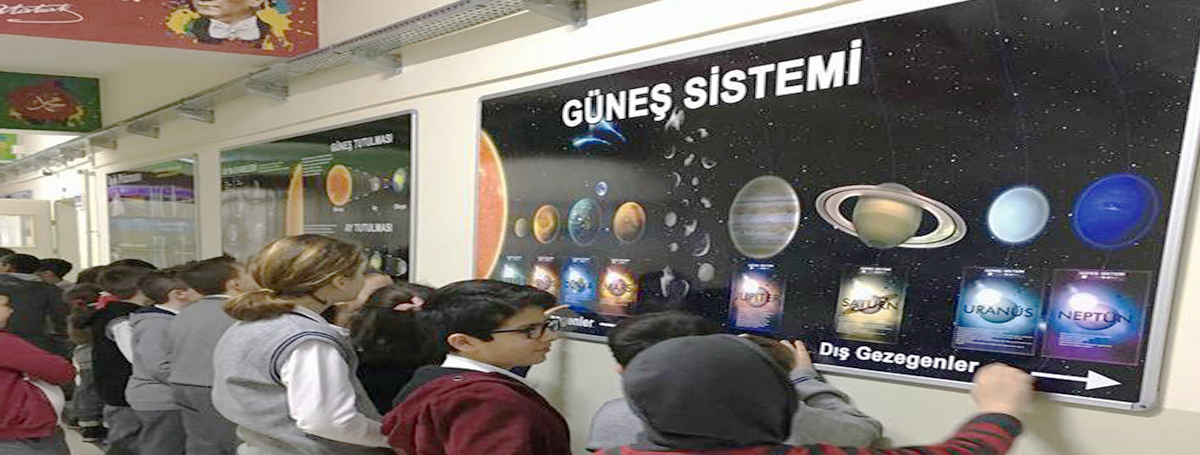
Throughout the Ottoman Empire, a key goal of education was to raise 'good Muslims'. Therefore there was a requirement for Islamic scholars, which was sustained through Islamic Theology Schools, called Madrasa.In 1913, the Medresetü-l Eimmeti vel Hutaba (School of ministers and preachers Medresetü-l Vaazin were combined to form the concrete origins these days's Imam Hatip high schools
In 1924, the Tevhid-i Tedrisat (Law of Unification of Educational Direction was passed, changing the existing, mostly sectarian academic system with a nonreligious, centralist and nationalist education one. The brand-new law brought all educational institutions under the control of the Ministry of National Education. A Professors of Faith at the Darülfünun (Istanbul University), unique schools for training imams and hatips (ministers and preachers) were opened by the new Ministry of National Education. However, in 1930 İmam Hatip schools were closed and 1933 the Faculty of Divinity was eliminated.
In contrast to the specifically secularist nature of the education policy of the Republican politician People's Party (CHP) religious education was renewed in 1948. This consisted of the facility of a Professors of Faith at the University of Ankara in 1949. Initial steps for the facility of Imam Hatip schools started in 1951 under the Democrat Celebration government, which set up seven special secondary schools (Imam Hatip Okulları). In addition, in 1959 Islamic Institutes were opened for graduates of Imam Hatip schools.
Following the coup d'etat in 1960, Imam Hatip schools encountered the risk of closure. Following the return to civilian politics and the introduction of the new constitution in 1961, graduates of Imam Hatip schools could only register in university programmes if they had passed courses provided at secular schools. During the premiership of Süleyman Demirel however, graduates of Imam Hatip schools were admitted to university without such requirements. The 1971 Turkish coup d'état introduced two key reforms: firstly junior high Imam Hatip schools were abolished, and in 1973 Imam Hatip schools were renamed as Imam Hatip high schools. Under the subsequent National Education Basic Law, Imam Hatip schools were specified as vocational schools, where trainees were to be trained as preachers and ministers or gotten ready for college.
Imam Hatip schools grew gradually in the beginning, but their numbers broadened rapidly to 334 throughout the 1970s. The coalition government of 1974, developed by the CHP and the MSP (National Redemption Party), devoted to resume junior high schools and providing the right of entry to university through examination. 230 new Imam Hatip high schools were opened in a period of nearly four years. During the 1974-75 school year the number of students addressing the Imam Hatip high schools grew to 48,895. This number subsequently grew to 200,300 by 1980-81. In addition, females gained the right of entry to Imam Hatip high schools in 1976. The expansion of Imam Hatip high schools is often cited as the impact of the National Salvation Party's subscription of a variety of unions with Nationalist Front governments.
Circumstance considering that 1980
The coup d'etat of September 12, 1980 is an important turning point in the history of Turkey and likewise for the history of Ä°mam-Hatip high schools. Under military governance, graduates of Imam Hatip high schools gained the right of entry to all university departments. In 1985, 2 new Imam Hatip high schools opened, one in Tunceli, despite of the so-called ethnic structure of the area, and the other in Beykoz as an Anatolian Imam Hatip High School, with the aim of adding to the education of children of families who work abroad. Although the number of Imam Hatip high schools had actually not increased given that, the variety of students participating in Imam Hatip high schools has increased by 45%. This is partially due to the improvement in the quality of Imam Hatip high schools and the education provided at such schools.
Throughout the education year of 1973-74, the total variety of Imam Hatip trainees was 34,570; in 1997 this number had dramatically increased to reach 511,502. Alongside this massive boost in popularity, the variety of schools also increased. The variety of Imam Hatip junior high schools reached 601 and secondary schools 402. The boost in both student and school numbers can be credited to aspects including the commitment of people to faith, dormitory centers, scholarships, the admittance of females and an increase in demand for spiritual education.
Research study suggests that between the years of 1993 and 2000, prospective trainees signed up at Imam Hatip high schools mainly to get spiritual tutoring alongside a more general education.In addition, research reveals enrolment at Imam Hatip high schools was based solely on the student's choice. The 3rd proposed consider the increase in appeal of Imam Hatip schools is the admission of female trainees in 1976. By 1998, nearly 100,000 females went to Imam Hatip high schools, comprising practically half of all trainees. This statistic is particularly exposing because females are not eligible to end up being either priests or ministers.
Nevertheless, the intro of eight years Check out the post right here of compulsory education in 1997 has seen an unexpected decrease in the popularity of Imam Hatip schools. In 1999, the reclassification of Imam Hatip schools as "employment schools" suggested that, although more alternatives had actually been offered to graduates, obtaining places at prestigious university courses became more difficult.By requiring that all eight mandatory years of schooling be invested under the same primary-school roofing system, middle schools were abolished. Kids might not enter employment schools (one of them the Imam Hatip school) until the ninth grade (rather than the 6th, as prior to).